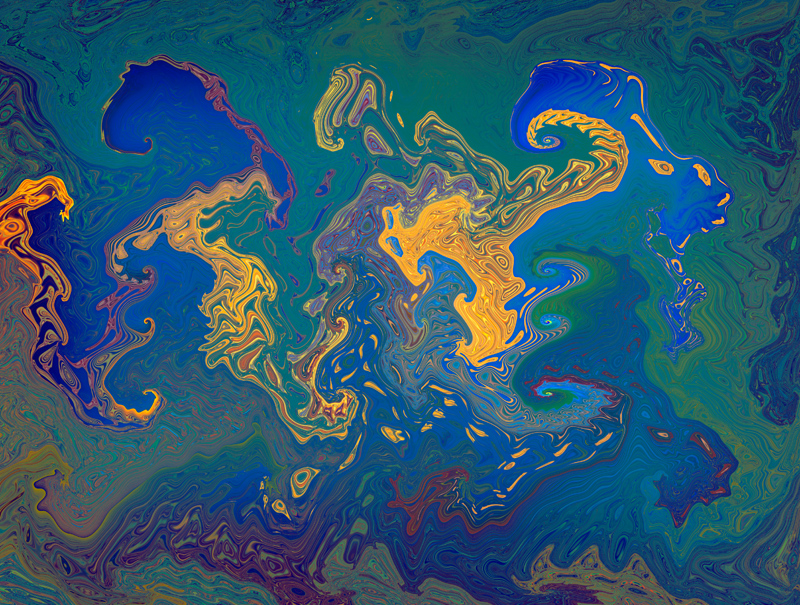STRANGE ATTRACTIONS
Explorations of stable images resulting from the repeated application of Photoshop filters.
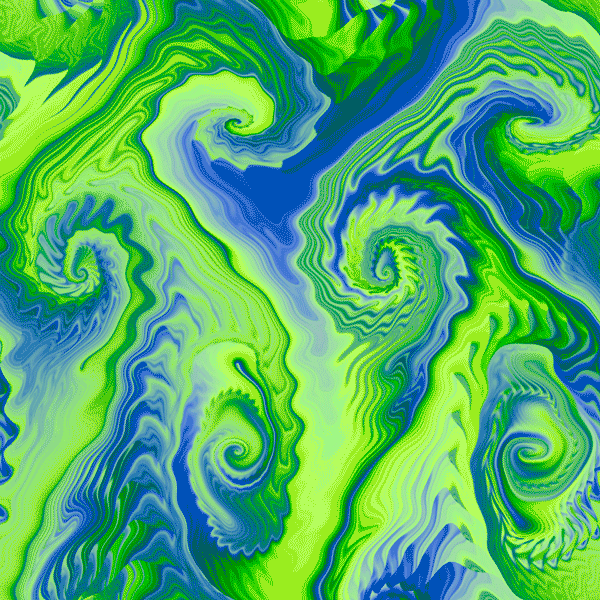
The Rectangular to Polar coordinate transformation:
The following curve is the result of many repeated iterations of the Photoshop Rectangular to Polar distortion filter, and seems to be a sort of fixed point. i.e. upon repeated application of the filter any image that you start with will evolve towards this stable shape. Although it is clearly a special curve in some sense, I haven't been able to find any reference to it. Maybe there is nothing fundamental about it other than it is "the one curve that is unchanged by the Photoshop Rectangular to Polar distortion filter".
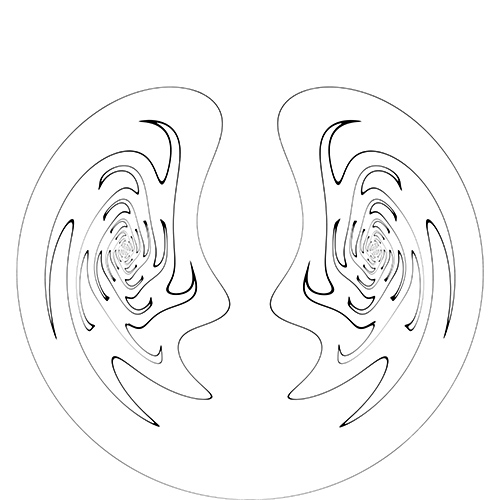
Although the shape of the curve is the same, the final image can have color or gray shading that depends on the initial image:
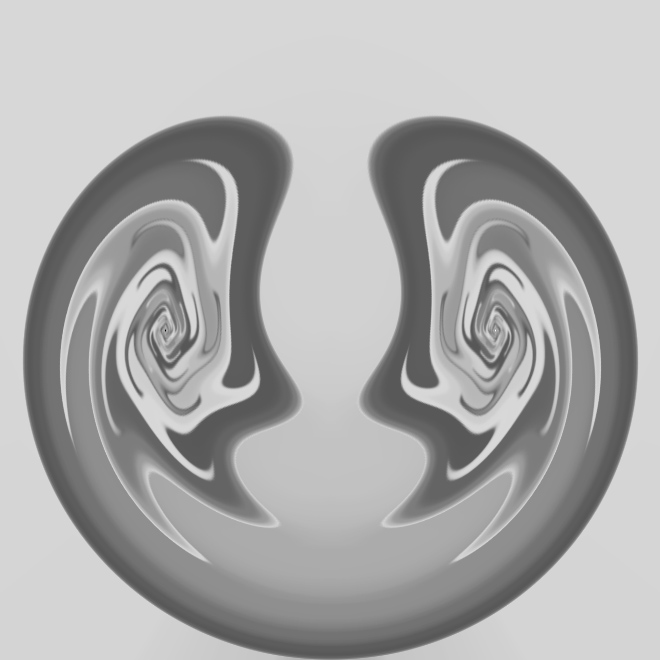
The colors eventually fall into a repeating pattern that appears to flow through the shape with a period on the order of 14 iterations.
The "Wave" distortion filter:
Repeated iterations of other Photoshop distortion filters can lead to other stable patterns. In particular the Wave distortion often evolves to fixed patterns. In this case the results depend on the amplitude, wavelength, and number of generators of the transformation. Here are a few static images and gifs showing the results of many iterations from some arbitrarily chosen initial image and arbitrarily chosen wave distortion parameters:
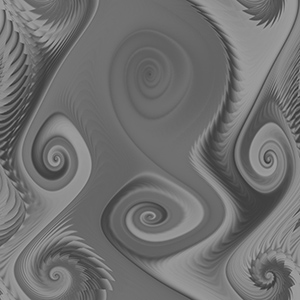
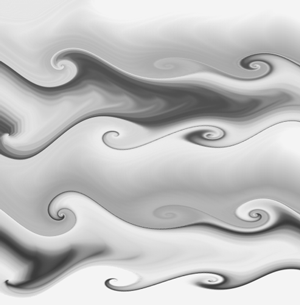
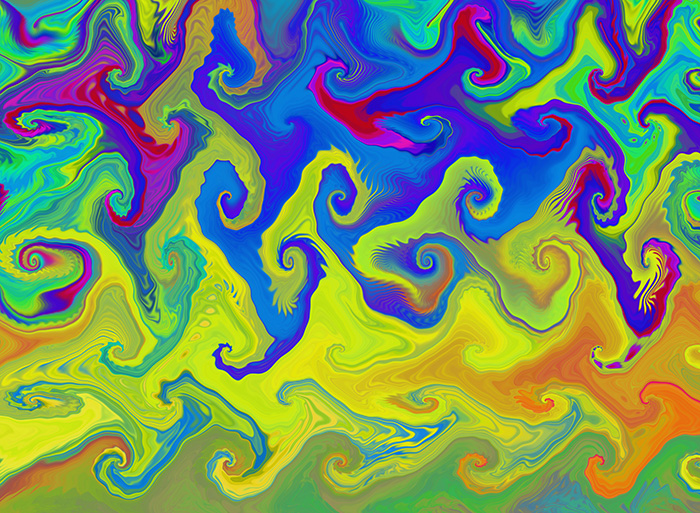
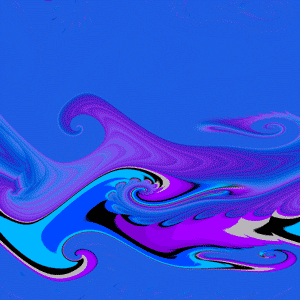
Correspondence to physical systems: Turbulence, vortices?
These images look like turbulence in 2-dimensional fluids like soap films (1), (2), (3). Why should this be? There is no physical flow. The pattern seems to arise just because it is stable (see Note 1 below) to repeated perturbations on a number of different wavelengths. The distortion filter generates a ∆x, so if the iteration corresponds to a ∆t we could define a velocity v=∆x/∆t. So this maps to a 2-dimensional nonlinear dynamical system.
There appears to be a correspondence to the patterns formed by Phytoplankton blooms. Here is a photo of a bloom taken by A. Martin "north of Norway in the Barents Sea in July 2004". [Martin, Adrian. (2005). The kaleidoscope ocean. Philosophical transactions. Series A, Mathematical, physical, and engineering sciences. 363. 2873-90. 10.1098/rsta.2005.1663.]
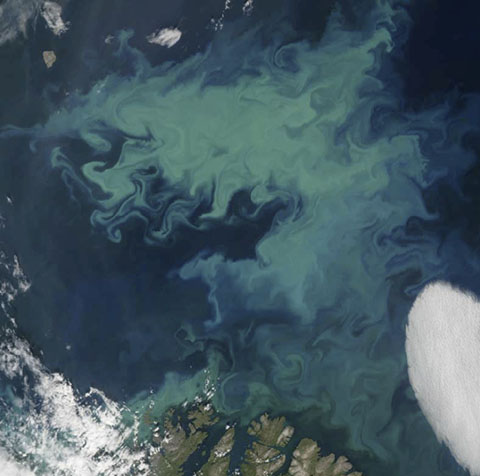
Note 1: *The photoshop images generated here sometimes required periodic adjustments to increase the image contrast. This could correspond to the energy that must be added to sustain turbulence patterns. Without this periodic injection of contrast into the image they can gradually "dissipate" away towards homogeneity. This effect is dependent on the boundary conditions: When edge pixels are repeated (instead of "wrapped around") there may not be the dissipation of the image, but in this case the colors in the image were observed to change more chaotically instead of falling into a periodic repetition.
Note 2: For some reason the Photoshop filter seems to employ a random selection of wavelengths within the specified range. This selection changes any time the program is restarted, making it problematic to reproduce previous results. I guess it is time to knuckle down and learn how to write my own image processing programs!
Apart from any relevance to physical systems, with different parameters and initial images we can generate some beautiful stable patterns.
